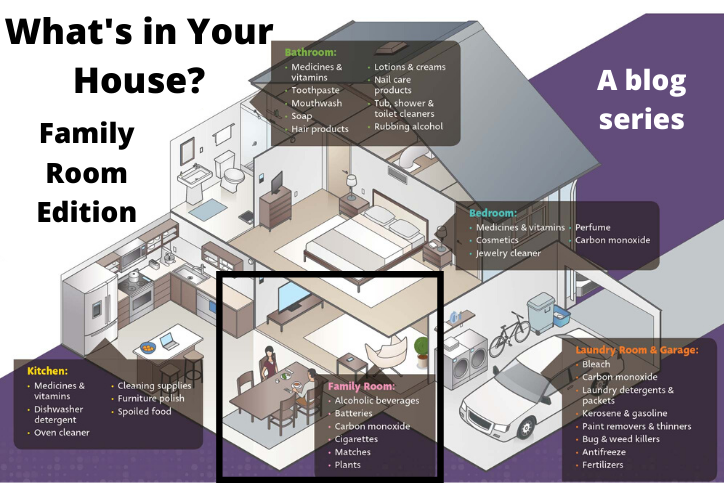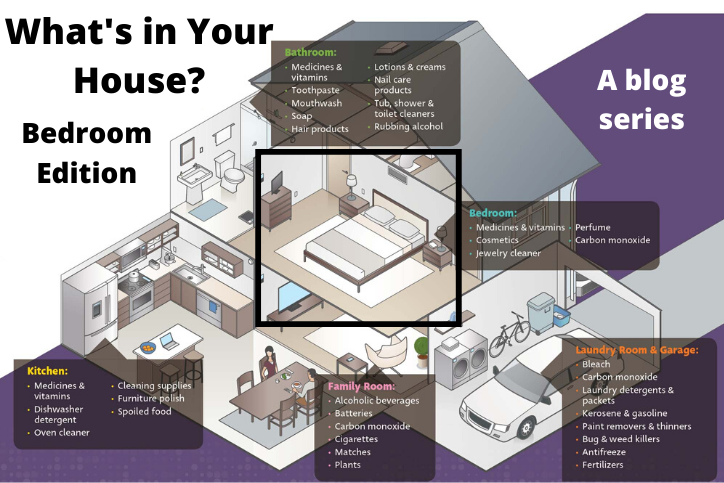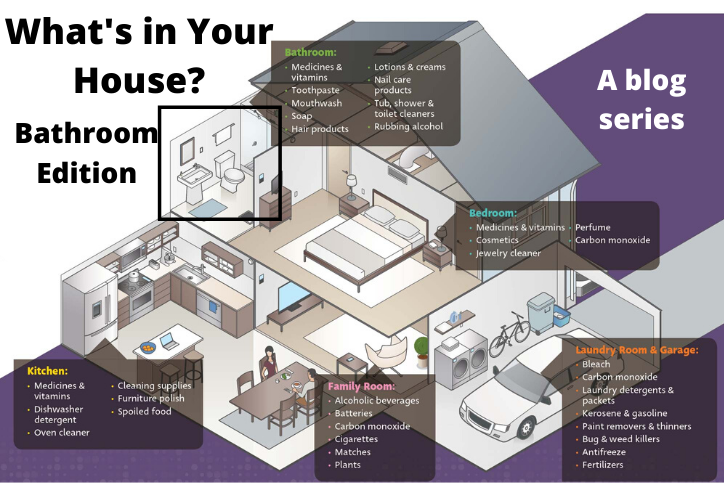What makes a house a home? Some may say the people in it. Others may say the things inside of it. No matter your opinion, we all take steps to make our houses feel more “home-y,” which should include safety. Whether you spend the whole day at home, or just a few hours, you want to make sure it is a safe place for you and your family to enjoy.
Keeping that thought in mind, we welcome you to the second edition of our home safety series. More than 90% of poisonings happen in the home. This series takes a closer look at some of the poison hazards that you might find in different rooms in your house. Below, we focus on the family room. Keep an eye out for these potential poisons, and make sure you use and store them safely.
Alcoholic Beverages
Alcohol can be found throughout your home, including some less obvious places. The amount of alcohol in different drinks varies. The effects of drinking alcohol depend on the concentration and amount consumed. If you take medicine, ask your doctor or pharmacist before drinking alcohol. They will let you know whether it is safe for you to drink. You can also check your medicine label to see if there’s a warning about drinking alcohol while taking the medicine.
All alcohol should be kept up, away, and out of sight from children. Always ensure that the caps on bottles are tightly closed. Do not leave alcoholic beverages where children can reach, as they may mistake it for juice. Alcohol affects children differently than adults. Children may experience low blood sugar after ingesting alcohol. This effect can last for 24 hours. If their blood sugar gets too low, it can lead to seizures and coma. Call the poison center as soon as possible if you suspect a child drank some alcohol, even if symptoms have not started.
Batteries
Batteries of all shapes and sizes can be found in the family room, usually in toys, remote controls, clocks, and other battery-powered items. Household batteries, such as AA and AAA, that are swallowed often pass through the body without harm. But button batteries — small, coin-sized batteries — can be very harmful if ingested. They can easily get caught in the esophagus (the tube that connects your mouth to your stomach) and start an electrical circuit. That circuit will burn the esophagus. Watch a short video that shows the damage a button battery can cause if it becomes stuck in the esophagus here. In this video, we use a hot dog to represent the esophagus.
Remember, all batteries should be kept up, away, and out of sight from children. If you realize a battery is missing from a toy or remote control and think that a child might have gotten a hold of it, call the poison center right away.
Carbon Monoxide
Carbon monoxide is a colorless, odorless gas. It is produced when there’s incomplete burning of a fuel. Some people have fireplaces in their family rooms. Fireplaces are one of the most common sources of carbon monoxide. Before using your fireplace each year, have the chimneys and vents checked and cleaned. Portable heaters are another common source of carbon monoxide, and are sometimes found in the family room. Do not let heaters run while you are sleeping. If you have any of these, or other common sources of carbon monoxide in your home, make sure that you also have a carbon monoxide alarm. Symptoms of carbon monoxide poisoning can mimic flu symptoms. If you think you have been exposed to carbon monoxide, turn off the suspected source, leave the area, and call the experts at the Maryland Poison Center.
Cigarettes
Throw cigarette butts away when finished with them. Electronic nicotine delivery systems (ENDS) must also be used safely. Be careful when handling e-liquids and wash your hands after handling, because nicotine can be absorbed through the skin. More information about ENDS and nicotine is available here.
Cigarettes, traditional and electronic, should be kept up, away, and out of sight from children. Children may eat cigarettes and cigarette butts. Do not leave cigarette packs in backpacks or purses, as both items are often left on the floor or somewhere else a child can reach.
Plants
A plants list of common poisonous and non-poisonous plants is available to download on our website. If a plant is on this list, it doesn’t mean it’s deadly — it might cause minor mouth irritation or a rash on the skin. If a plant is not on the list at all, it can’t be assumed to be poisonous or non-poisonous, as this list is not all-inclusive. For more information about plants, read this blog post. If leaves or flowers from plants fall onto the ground, pick them up before a child or pet can get to them.
These are the main items to watch out for to help make your family room a safe space for family and friends alike. Continue to tune in over the next few months to learn about poison dangers in other rooms and steps you can take to make those spaces poison safe. If you think someone has ingested any of the above products, call the poison center right away at 1-800-222-1222. Pharmacists and nurses will determine what steps should be taken. Do not wait for symptoms!





Leave a Reply